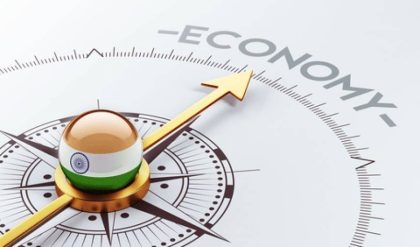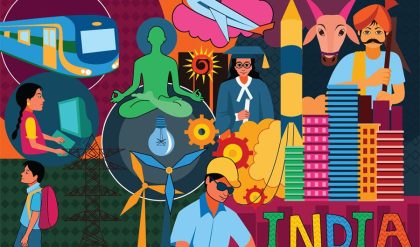Introduction
· The economic growth that a country and its people achieve over a period of time, is achieved at the cost of the environment.
· Environment is badly damaged because of various economic activities — industrial activities, mining activities, and infrastructure development, etc.
· Sustainable development is the need of the hour. It has the potential to address the challenges of the environment and also of the economy.
· All biotic and abiotic factors collectively constitute environment.
· All living organisms, such as animals, human beings, plants, birds, insects, and all other single cell and multi-cell organisms are biotic elements.
· All other non-living things, such as air, water, land, etc. are abiotic elements.
Significance of Environment
· Environment plays a significant role in every aspect of life. The contributions of the environment are varied: It provides resources (both renewable and non-renewable resources).
o It has the capacity to assimilate wastes.
o It provides diversity, essential for the sustenance of life.
o It provides aesthetic services.
· Environment has the carrying capacity, i.e., it re-generates some sorts of resources provided the rate of exploitation is lesser than the rate of re-generation; if the rate of exploitation increases, the resources get exhausted.
· Environment has the capacity to expel impurities (various pollution in the environment); it has limited capacity (absorption capacity); hence, if the rate of pollution is more than the rate of purification, then it is a threat to the environment (i.e. environmental crisis)
Major Problems
· The environmental crisis creates many problems such as depletion of Ozonelayer and Global Warming at the global level.
· Environment has a major impact on the life and living of people; it may cause health issues, natural calamities (floods, earthquakes, droughts, etc.).
· India has abundant natural resources (both renewable and non-renewable resources).
· An exponential increase in population threatened led to over-exploitation of the natural resources which thereby threatened the environment.
· Some problems with the exploitation of resources in India are −
- Water pollution
- Air pollution
- Land degradation
- Deforestation
- Desertification,
- Wildlife extinction, etc.
· The per capita forest land in India is about 0.08 hectare, while the requirement is 0.47 hectare.
· India has about 17% of the world’s total human population and 20% of the world’s total animal population, whereas, it has only 2.5% of world’s total geographical area.
· The number of vehicles in India increased from 3 lakhs (in 1951) to 67 crores in 2003.
· The use of motor vehicles is one of the major sources of air pollution in India.
· The Central Pollution Control Board (CPCB) of India has identified 17 categories of polluting industries.
· Environmental crisis also leads to economic crisis.
Global Warming
Global warming is a human-induced impact on the environment, under which the temperature of the lower atmosphere is increasing.
The major consequences of global warming are — melting of polar ice, sea level rise, coastal floods, extinction of various organisms, ecological imbalances, natural calamities, etc.
To arrest this alarming trend, international efforts have been made. The first attempt of that sort is the Kyoto Protocol, which was the result of the UN Conference held in Kyoto, Japan in 1997. The Kyoto Protocol set parameters to control the impacts of global warming by reducing the emission of greenhouse gases globally.
Ozone Depletion
Ozone depletion is the phenomenon of reduction of the ozone layer. Ozone layer is a Stratospheric layer of Ozone (O3) that filters the sun’s ultraviolet rays and protects us from many diseases including skin cancer, cataract, and sunburn.
But because of the excessive emission of chlorofluorocarbons (CFCs), used as cooling substances in air-conditioners and refrigerators, or as aerosol propellants and bromofluorocarbons (halons), used as fire extinguishers, ozone layer is getting depleted (as shown in the above image – through a time period).
The Montreal Protocol was brought into existence to restrain the use of CFC compounds along other ozone depleting agents including carbon tetrachloride, trichloroethane (methyl chloroform), and halons (bromine compounds).
Sustainable Development
· The notion of Sustainable Development was adopted by the United Nations Conference on Environment and Development (UNCED).
· Sustainable Development is defined as the development that meets the needs of the present without compromising the ability of future generation to meet their own needs.
· The Brundtland Commission suggested that meeting the needs of the future depends on how well we balance social, economic, and environmental objectives, or needs, when making decisions today.
· Using the non-conventional sources of energy (such as Hydro power, wind power, geothermal energy, tidal power, etc.) is one the best strategies to protect the environment.
· In rural India, a good number of people still use wood and other biomass products for cooking, and it has a great negative impact on the environment as the process involves cutting of trees; hence, providing them LPG as an alternative strategy would help save the environment.
· Promoting the use of CNG for motor vehicles is another important alternative.
· Solar power is very handy to use; a solar power plant can be established either for a single household and also for a big factory.
· Promoting the use of traditional knowledge practices is also environmental friendly and also good for the human health.
· Organic farming also needs to be promoted at large scale to improve the environmental condition, as conservation of the environment is the major objective of sustainable development.
· Pollution Control Boards − Central Pollution Control Board (CPCB), established in 1974, aims to address the environmental concerns especially, water and air pollution.
· The CPCB is responsible to investigate, collect, and provide information related to water, air, and land pollution across the country. It also sets a standard for the sewage/trade effluent and emissions of various industrial pollutants.





